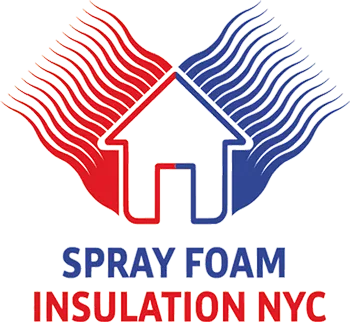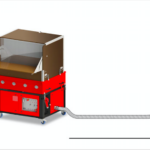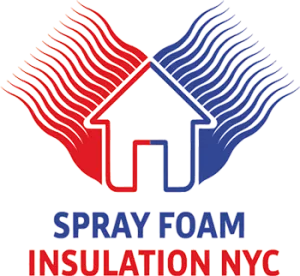My House is Too Cold in the Winter—Should I Use Spray Foam or Cellulose Insulation?
Winter can be brutal, especially when you can’t seem to keep your house warm and cozy. If you’ve found yourself layering up indoors or cranking up the thermostat only to see skyrocketing energy bills, it’s time to consider upgrading your home insulation. The question is, should you choose spray foam insulation or cellulose insulation?
Both options have unique benefits, and the right choice depends on your needs, home design, and budget. This guide will explore the pros and cons of each insulation type, so you can make an informed decision to achieve a warmer home.
Spray Foam Insulation vs. Cellulose Insulation
When it comes to insulation, spray foam and cellulose are two of the most popular choices. Here’s a quick overview:
- Spray Foam Insulation is known for its ability to seal air leaks effectively while providing superior thermal insulation. It’s available in two types—open-cell and closed-cell—and is applied by spraying a liquid foam that expands to fill gaps and cracks.
- Cellulose Insulation is made from recycled paper products treated for fire resistance. It’s blown into walls or attic spaces and provides solid thermal insulation at a relatively lower cost.
Both options are effective for reducing heat loss, but they perform differently based on the context. Here’s a closer look at what each insulation type brings to the table.
Why Spray Foam is Generally the Best Option for Cold Homes
Spray foam insulation offers distinct advantages for homes that struggle to retain heat during the winter:
1. Unmatched Air Sealing Capabilities
Spray foam expands as it is applied, allowing it to fill every gap, crack, and crevice. This creates an airtight seal that stops drafts from leaking warm air out or cold air from coming in. For homes in colder climates like New York City, this feature is critical since reducing air leaks makes a significant difference in maintaining indoor warmth.
2. Higher R-Value Per Inch
R-value measures an insulation material’s ability to resist heat flow. A higher R-value means better insulation. Closed-cell spray foam offers an impressive R-value of R-6.5 to R-7 per inch, while open-cell foam has an R-value of R-3.5 to R-4 per inch. This is significantly higher than cellulose, which averages around R-3.5 per inch.
Not only does spray foam insulation perform better, but it also requires less material thickness to achieve the same insulating power, saving precious space in areas like walls.
3. Moisture Resistance
For homes prone to dampness or located in humid environments, closed-cell spray foam offers added benefits. It acts as a moisture barrier, preventing water infiltration and reducing the risks of mold growth.
When Cellulose Insulation Might Be the Right Choice
Although spray foam is often the better solution for cold weather, cellulose insulation shines under specific circumstances:
1. Cost-Effectiveness
If you’re working within a tight budget, cellulose insulation is typically more affordable than spray foam. The lower upfront cost makes cellulose a popular choice for large-scale upgrades, such as insulating an entire attic.
2. Eco-Friendly Attributes
Cellulose insulation is made from recycled materials, primarily paper, which reduces its environmental impact. For homeowners who prioritize sustainability, this is an excellent choice.
3. Effective for Moderate Climates
If your home experiences more temperate winters, the slightly lower R-value of cellulose insulation might be sufficient to meet your comfort needs.
Case Study: A Homeowner’s Choice
A homeowner in a temperate climate chose cellulose insulation for their attic renovation. The result? They were able to achieve lower heating and cooling expenses and maintain comfortable temperatures year-round, all while minimizing their environmental footprint.
Important Considerations for Both Insulation Types
No matter which insulation material you choose, here are a few key things to remember:
1. Application Areas
- Spray Foam excels at sealing small gaps and cracks, such as those around windows, doors, and pipes. It’s also ideal for spaces where you need high R-value insulation in a narrow cavity.
- Cellulose is better suited for covering wide-open areas, such as attics and walls, where large quantities can be applied effectively.
2. Professional Installation is a Must
Both spray foam and cellulose need to be installed by professionals for optimal performance. Incorrect application can lead to uneven coverage, moisture issues, or even structural damage. Trust an experienced insulation contractor like Spray Foam Insulation NYC to get the job done right.
3. Moisture Concerns
If moisture is a concern in your area, spray foam—especially closed-cell foam—is the superior choice due to its water resistance. Cellulose, while treated for fire resistance, doesn’t offer significant protection from dampness or humidity.
How Cold is Too Cold for Spray Foam Insulation?
Generally, spray foam shouldn’t be applied below 40°F unless labeled for cold-weather use. Always consult with your insulation professional to ensure proper application and performance.
Detailed Comparison of R-Values and Costs
Insulation Type | R-Value | Cost per Square Foot | Best For |
|---|---|---|---|
Spray Foam (Closed-Cell) | R-6.5 to R-7 | Higher upfront cost | Air sealing, high R-value, moisture resistance |
Spray Foam (Open-Cell) | R-3.5 to R-4 | Moderate cost | Noise reduction, moderate R-value |
Cellulose | R-3.5 | More affordable | Eco-conscious insulation, large open areas |
Making the Right Choice for Your Home
Choosing the right insulation for your home is crucial to achieving year-round comfort and energy efficiency. When deciding between spray foam and cellulose, consider factors like your budget, home layout, climate, and environmental priorities.
- For homes in cold climates where every degree matters, spray foam insulation is often worth the investment. Its superior air sealing, higher R-value, and moisture resistance make it an excellent option for battling frigid winters.
- If cost or sustainability is your primary concern, cellulose insulation provides solid performance at a lower price.
Ultimately, the best way to make a confident decision is to consult an insulation professional.
Take the First Step Toward a Warmer Winter
Still unsure? Don’t sweat it—Spray Foam Insulation NYC is here to help. With over 15 years of experience serving New York City, we provide expert advice and professional installation tailored to your home’s specific needs.
Sign up for a consultation today and discover how we can keep your home cozy, energy-efficient, and well-insulated all year long.
[Book a Consultation Now]
Meta Data
Meta title
Spray Foam vs. Cellulose Insulation – Which is Better?
Meta description
Cold air leaking into your home? Compare spray foam and cellulose insulation to keep your house warm. Find the right solution for your winter comfort needs.











